Clement’s Inn Passage is named after an organisation called Clement’s Inn. What was Clement’s Inn and what happened to it? Here Mhairi Gowans takes a look at the history of a medieval institution that foundered in the 19th century.
During the Middle Ages, the Holborn and Strand areas of London became the site of law organisations called Inns. Akin to medieval guilds or colleges, there were originally two types – the Inns of Chancery and the Inns of Court. The Inns of Chancery were there for the training of barristers and, once graduated, these trainees would then go on to become members of the Inns of Court. Students of Clement’s, Clifford’s and Lyon’s would become members of the Inner Temple. New Inn students went to Middle Temple, Lincoln’s Inn drew from Thavie’s and Furnival’s, while Gray’s Inn took its recruits from Barnard’s and Staple Inns.
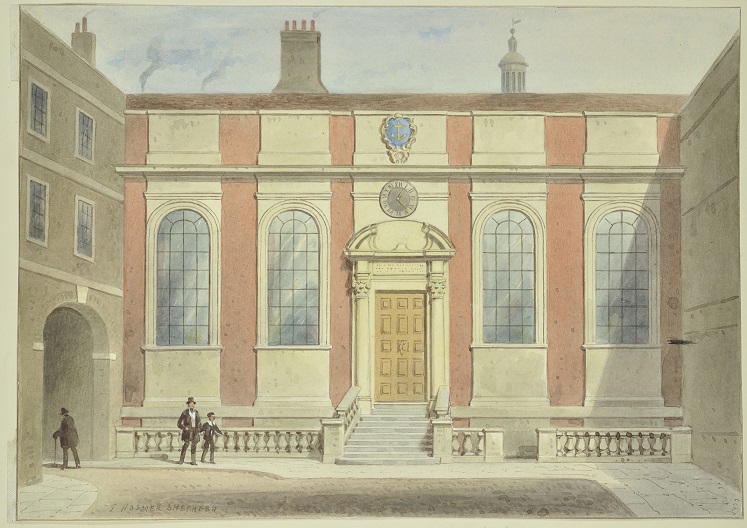
Clement’s Inn is believed to have been founded in the time of Edward IV, taking its name either from the Church of St Clement’s Danes or the holy well of St Clement’s, which is on the site of the Royal Courts of Justice. Clement’s Inn appears on the sixteenth century copperplate map of London as a small collection of houses, and then more clearly on John Rocque’s 1746 map as a network of buildings and a garden.
It hath three Courts one within another, all old Buildings, except a Row in the Garden, which is well built with a Prospect into the Garden, as also into that of New Inn adjoining to it, with a Door to open into the said Inn a Days, but shut at Nights; and here is a back Door which gives Passage into Clare Market. – John Strype, Survey of London 1598
Clement’s Inn is depicted in even greater detail in the Charles E Goad map of 1887, which not only shows the outline of the buildings, but also marks out the individual rooms and their functions, revealing a set of chambers and a billiards room. Sadly, by this time, Clement’s Inn was in its final years as the use of the Inns of Chancery as training institutions had fallen out of favour. With its membership depleted, Clement’s Inn had to advertise its rooms for let to residents and businesses. This itself is evident in the 1887 map where we can see that the hall of the Inn was being rented out by the Monotype Printing Company.
Chambers to Let in Clement’s Inn – A complete set of Chambers, consisting of Four Rooms, viz.: – a Study, Sitting-Room, Bed ditto, and Kitchen replete with every convenience – for £25 per annum. The Fixtures at a valuation – Inquire at the Age Office, or at the Porter’s Lodge. – AGE (London) Sunday 23 March 1828
The Illustrated London News in 1857 described Clement’s Inn as having six members who were allowed only a half-pint of wine on “grand days”. The neighbouring Lyon’s Inn was in a worse state with only two members and no students for 20 years. The article described it as a “body without functions or members”.
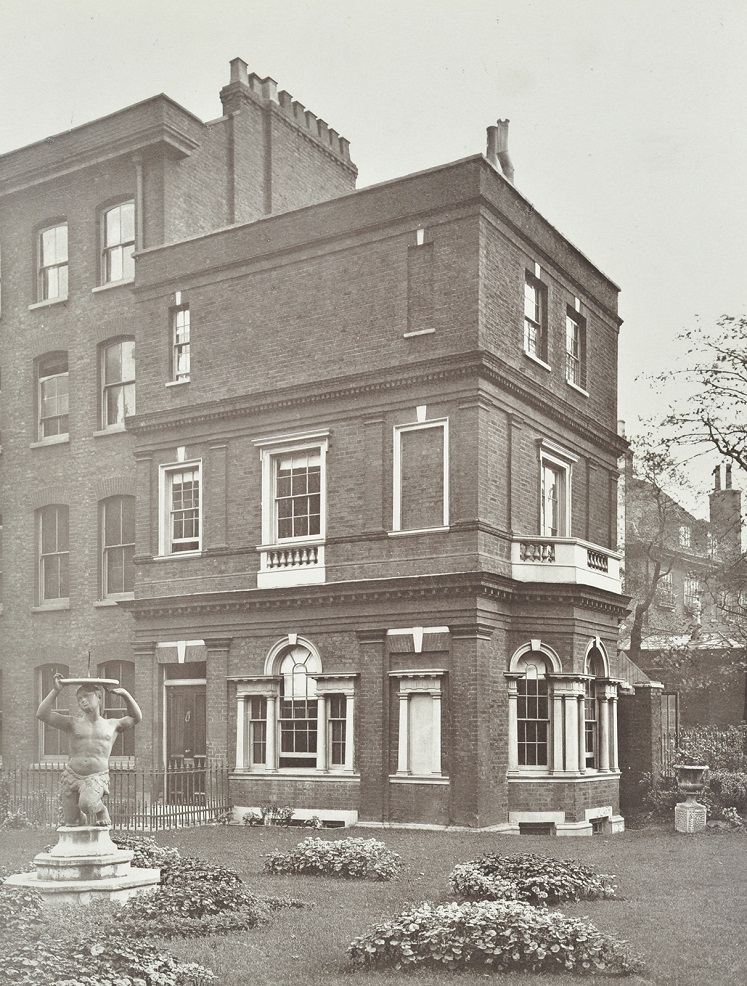
The end of the line for Clement’s Inn finally came in 1891 when its buildings were demolished to be replaced with new residential and office spaces. Perhaps due to its long defunct state as an organisation, its death, while much reported, was not mourned. The London Illustrated News described Clement’s Inn as “the least picturesque”, “most insignificant” of the Inns and stated that it was “devoid of famous tradition”. The Aberdeen Evening Press remarked on its absence of library, students, chapel and chaplain. The only aspect of the old Inn that seems to have been mourned at all was its gardens, which the Kentish Independent described as an “oasis of grass and plane trees”.
Its restfulness and repose is very pleasant after the bustle of the streets, and Londoners cannot afford to let such olden-time gardens pass away without at least a word of regret – Bognor Regis Observer Wednesday 21 October 1891
If no one of note had come out of the old Inn, we cannot say the same for the new complex of buildings that replaced it. Suffrage activist Emmeline Pethick-Lawrence took up residence in Clement’s Inn passage during the early 1900s and her apartments went onto become the base of Emmeline Pankhurst’s Women’s Social and Political Union. Read about Clement’s Inn’s suffrage years.
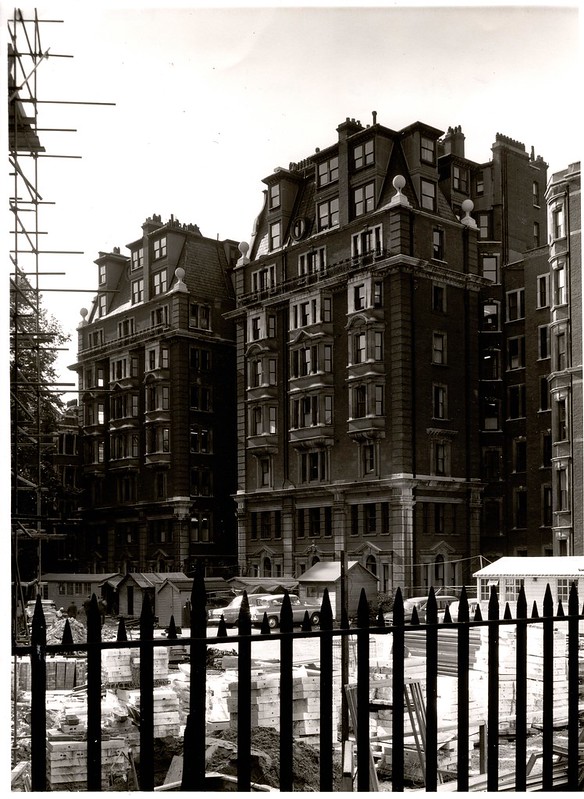
Newspaper quotes were sourced using the British Newspaper Archive


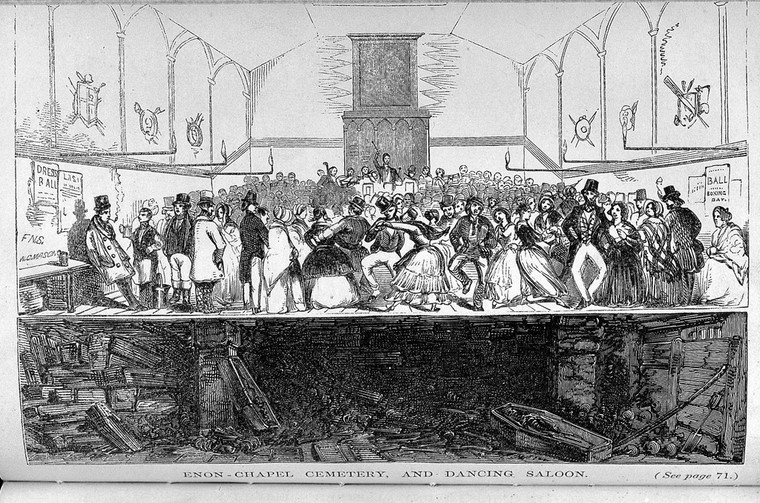


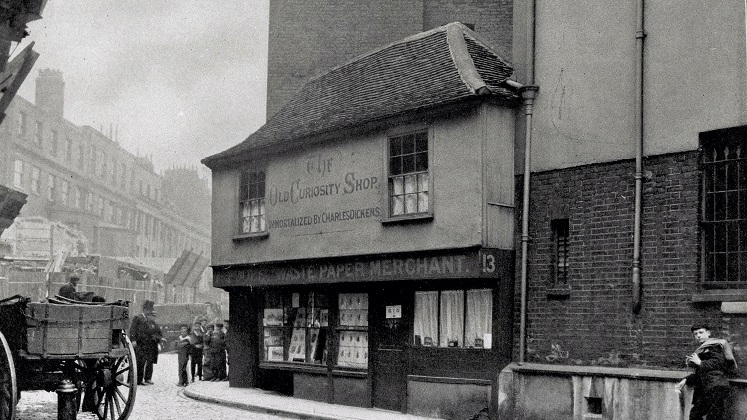
I have a photograph of what I believe to be the balcony of Clement House (with Clement St Danes in the background) with my Husbands grandmother on. It was taken around 1910 – 1915 do you know what this building was being used for at this period?
Thank you for any information in anticipation.
Regards
Sandra Harris
Hi Sandra,
If you mean Clement House on Aldwych, then according to Wikipedia, it was the headquarters of an insurance company: https://en.wikipedia.org/wiki/LSE_Clement_House.
Hope this helps!